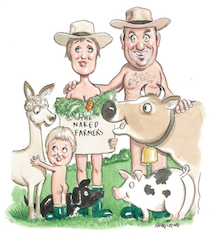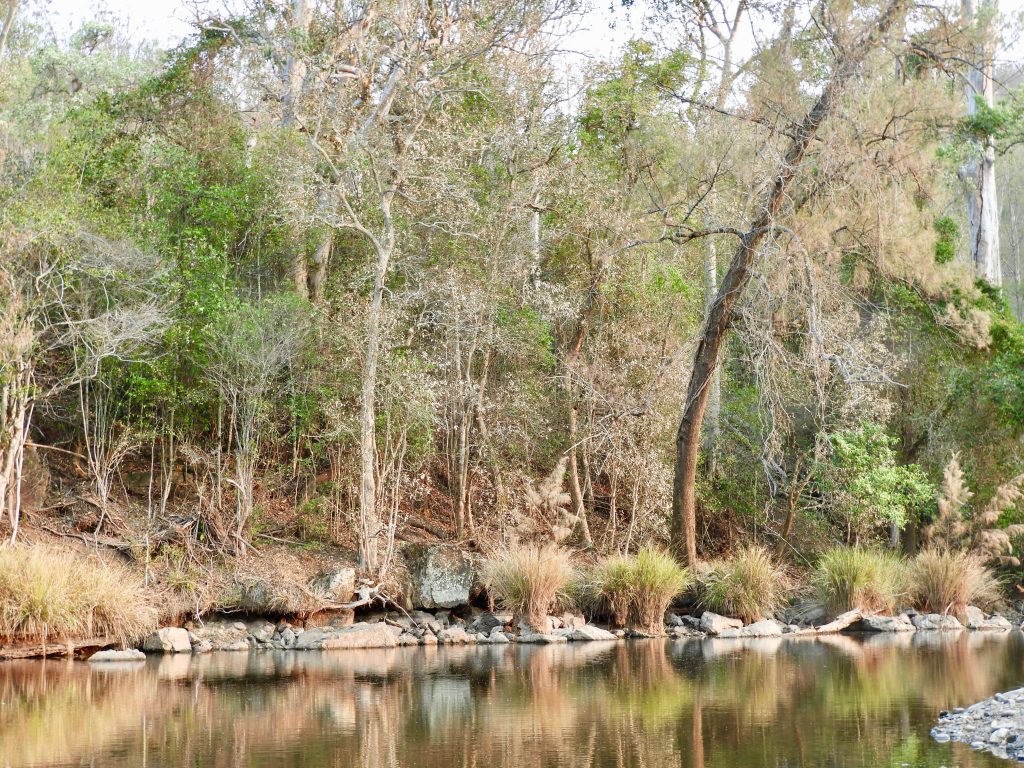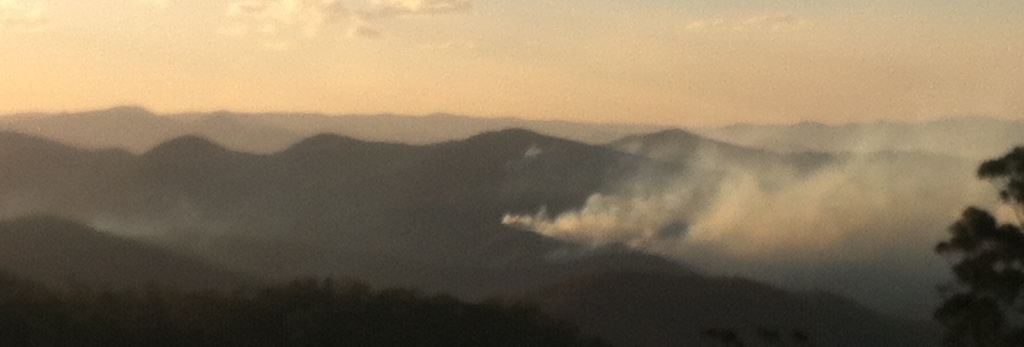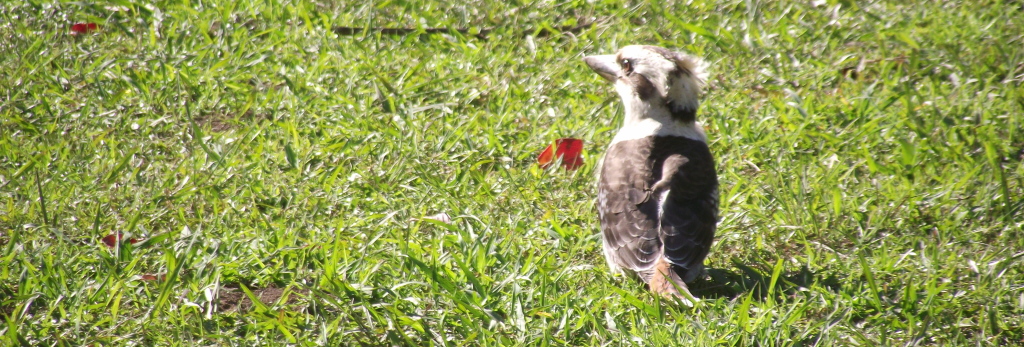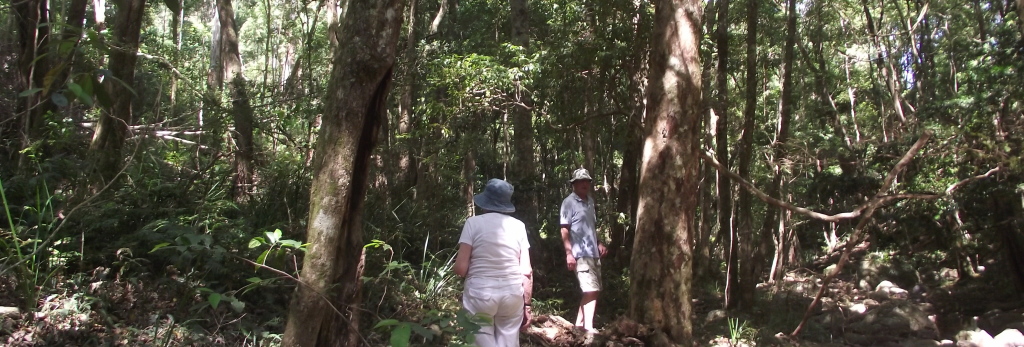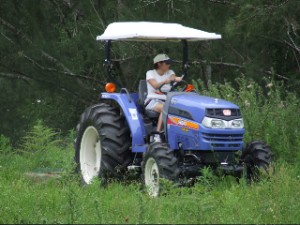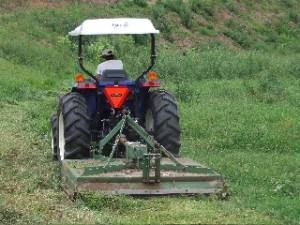After the drought and the fires we knew that this would be a year of healing. When the rain fell on Christmas Day, we all felt a glimmer of hope. Never before have I been so glad to slam the door on a year as I was at the end of 2019. We were broken people. Brittle and hard, dusty and withered by the heat, the dry, the exhaustion of trying to save our cattle.
And then there were the fires. Three months of fear as they circled us, finally blazing through the bush and rainforest we take such pride and joy in. Helicopters scurried to and fro overhead day after endless day, making long journeys to the Hastings River for fire fighting water. They tried to collect from one of the rapidly dwindling pools in the river below us, but it was too dangerous. We were grateful not to have that stress as well.
The river stopped flowing in October. The baking sun evaporated inches every day and rather than the cool depths we are used to refreshing ourselves in after hot days of farmwork, there were just a few muddy warm puddles for us to flounder in. The same water which served our stock and the house, that we wash our bodies and our clothes in. The home of our precious platypus population. Never before, in living memory, has the Ellenborough River stopped flowing.
Our once verdant pastures were desiccated dust bowls. Our beautiful Jerseys dropped to their knees and we battled to save them. We stressed about money as we paid for tonne bags of pellets and small mountains of luxurious lucerne. We nursed and nurtured the fallen as we begged them to get up and get well. We sold others rather than lose them too. Every day seemed to be a weighing of the scales with death. The Grim Reaper wielded his scythe mercilessly. We have seen horror before but this was different. Millie, Milka, Henrietta, Damson, Clara were all hand fed and much loved pets as much as quiet and peaceful matriarchs in the herd.
Big Red was a huge cow with monster horns. She went down and we kept sitting her up but Ged went away for work and I couldn’t do it alone. But by buggery I wasn’t going to let her die so I used every ounce of my ingenuity and strength during that week – erecting shade over her, hoisting her up onto her knees so she could eat and drink and try and regain her strenght. She died anyway.
Damson had been abandoned by her mum the day she was born so was hand reared by us. She and Petal were inseparable. I was worried about her birthing for the first time so checked on her daily. She went down and I tried to help but she ran from me and slipped into the river. That was a long day of literally trying to keep her head above water until we could lift her out. Once dry and safe we fed her up, to no avail.
I lost all my favourites last year. All my four legged friends. It was brutal.
We had the joy of Goldie and her puppies. 8 little parcels of love. And then Goldie went off for a wander with Mudji and never came home. We hunted high and low. With no body to bury and her babies to raise, there was no time for the deep grief of her loss.
Even the neighbours in their 80’s who have farmed this land their whole lives said beasts were dropping like flies. None of us knew that the drought would go on so long and that it would be as bad as it was. We were relying on spring rains. They never came. We all started feeding too late.
Added to the heat, dust and fire stress then was the sweet stench of our friends’ rotting flesh as we weren’t allowed to burn them.
I’ve never been in a war zone. My experience can’t compare but that’s what it felt like – heat, smell and smoke. Choppers whirring overhead. A constant feel of threat and dread. By December Ged and I were ready to walk off the land. It was too much. We were too scarred, so tired, broken.
We promised ourselves ‘no rash decisions’ as I restlessly googled farms for sale in New Zealand. We knew 2020 would be a year of healing, of finishing projects, of letting time and space separate us from our grief. Little could we know what this year had in store . . .
And yet. Covid has forced us home and stopped the rush and scurry of our lives, leaving the farm to take Ben to school etc. We have had more rain in the first few months of 2020 than in the past few years in total. The grass has hurled itself out of the ground. Mother Nature is recovering. And so are we. Time to be. Time to be here. To let the sounds seep into our souls. To sleep, at last. To watch the meandering river and its quiet life. To listen to its burbling over rocks. To watch eagles soaring, the cormorant drying his wings, the platypus paddling on the surface before duck diving once more.
And in these quiet pleasures comes peace. A deep stillness settling in my soul as Nature heals the deep heart she has wrought. As we rest easy in her abundant embrace after wrestling with her and The Grim Reaper last year.
I guess I’m a farmer now. I guess I learnt just why they can be dour and taciturn. I learned about the pain lodged like a stone in their hearts. And I have become quieter as a result.
